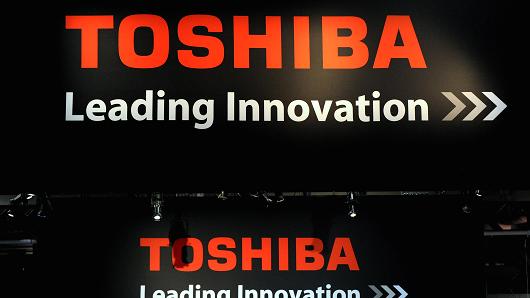They are faced with a conundrum
Toshiba has, in its 142-year lifespan, been through two world wars and one cold war – but all that might be put to an end thanks to an ill-fated purchase of a nuclear power company.
Toshiba’s Troubles
Following a troubling accounting scandal in 2015, it was found that the company’s profits from 2008 to 2014 had been inflated by over US$1.2 billion. This subsequently lowered their market value by a hefty US$8 billion and now, the company is now facing an expected operating loss of US$3.4 billion for the financial year ending March 2017, with US$6.3billion of that coming from a write down involved with their Westinghouse Electric nuclear construction subsidiary.
Westinghouse, which was purchased from the British Government in 2006 by Toshiba for US$5.4 billion, has struggled to meet deadlines, stick to budgets, or even complete any of its projects. The costs of which have amounted to more than what Toshiba initially paid for the company in the first place. Toshiba, now, is looking to shed the troubled division, but that comes with its own hurdles.
Experts note that the interested companies – a majority of them from China – would have to traverse tricky political bureaucracy, and a lot of red tape before the sale would happen. Long story short, United States government would not be too keen to let nuclear technology fall to the hands of the Chinese.
Tomoko Murakami, a manager at the Institute of Energy Economics, noted that non-Chinese “buyers won’t purchase Westinghouse at the same price that Toshiba paid.” As such, a full separation from its radioactive nuclear arm seems unlikely in the near future.
The Last Straw
Faced with this conundrum, Toshiba is seeking to sell off its flash memory manufacturing arm, the crown jewel of the Japanese conglomerate. Selling their flash memory unit, Toshiba’s most profitable division which produces memory card chips for smartphones and computers across the world, simply highlights the scale of their financial situation. To put things in perspective, during the 2016 financial year, the arm accounted for a quarter of Toshiba’s 5.67 trillion yen revenue
Satoshi Tsunakawa, Toshiba’s CEO, said that “[they] are considering various offers for the chips business and [they] will act flexibly, even if that means giving up a majority of the unit.” Of the offers that are reportedly on the table, Toshiba’s rivals – namely Western Digital, Foxconn Technology Group, and Kingston Technology – are said to be interested, with bids ranging from 700 billion yen (US$6.2 billion) to 1.8 trillion yen.
Experts are speculating on whether they would be able to sell off both its nuclear power and flash memory businesses, in addition to the white goods and medical units which were sold off during the previously mentioned accounting scandal in 2015.
Three-year Plan For Toshiba
About a week back, Toshiba announced a three-year plan to turn the company around, with a targeted sales revenue of 4.2 trillion yen and an operating profit of 210 billion yen by 2019. While down from the 5.67 trillion yen revenue amassed in 2016, these revised figures account for the eventual loss of their nuclear power and flash memory businesses.
Although it is not impossible for the conglomerate to recover from this disaster, the road to recovery will be much harder than it seems. The sale of their moneymaking flash memory business would be a hard hit, but it is one that must be taken to ensure an all out meltdown is avoided. From there, the company would have to work its way back up, as it has time and time again.

















